
-
Platform
-
Operating System
- Genre Indie , Simulation , Sports
- Developer Kunos Simulazioni
- Creator 505 Games
- Release Date 2017-05-18 1:14 PM
- Supported Languages English, Italian
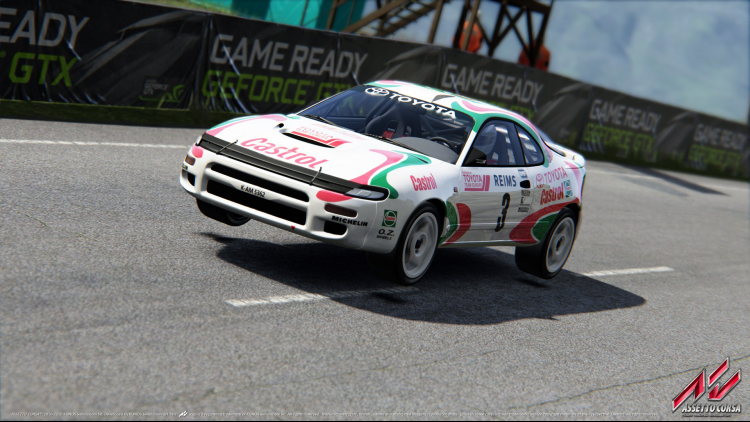
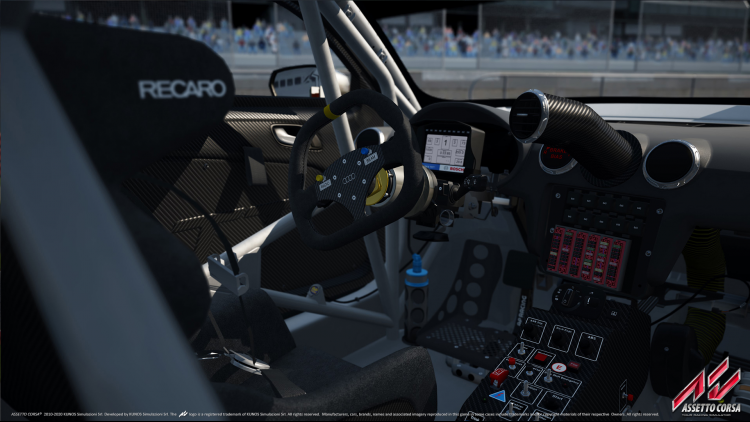
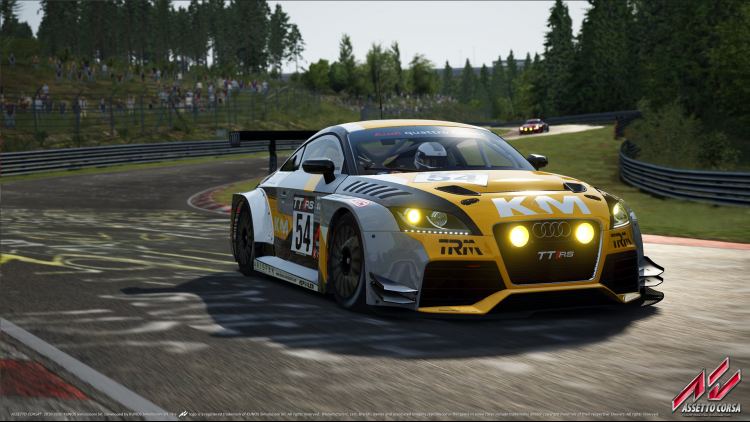
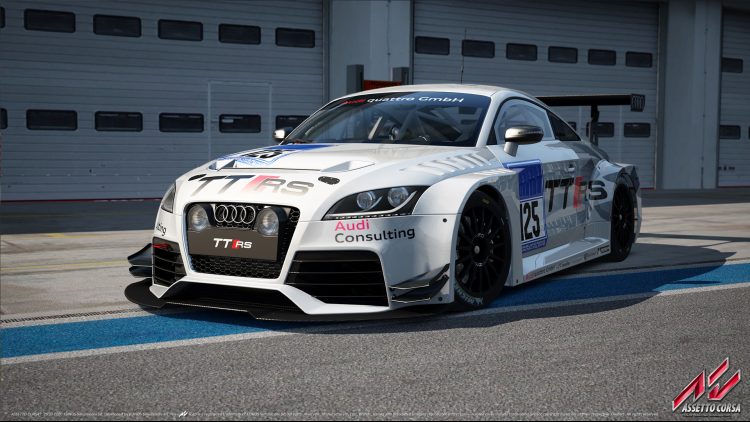

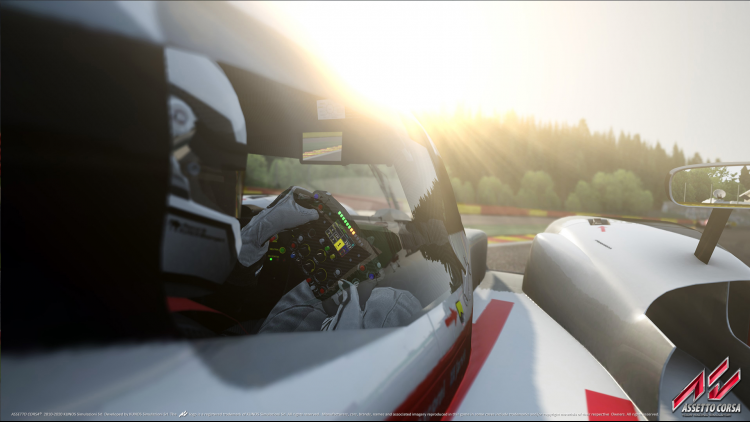
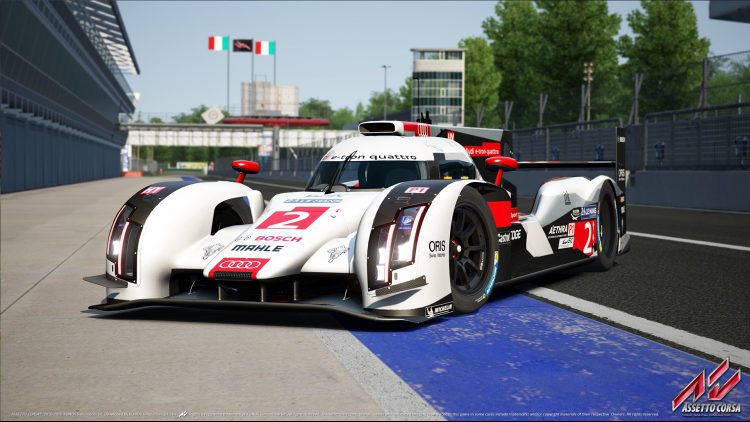
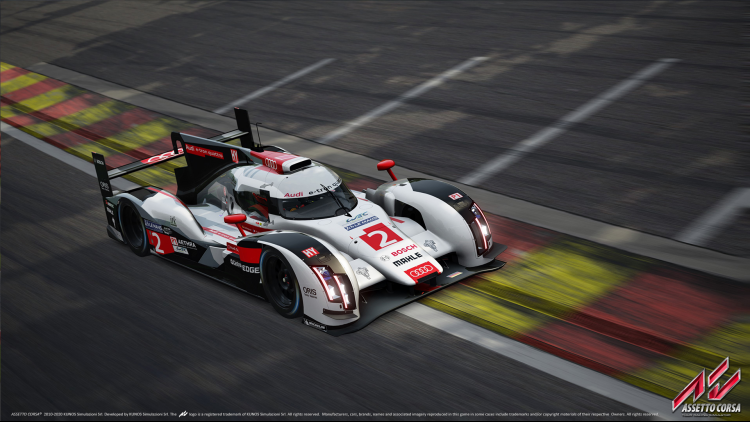
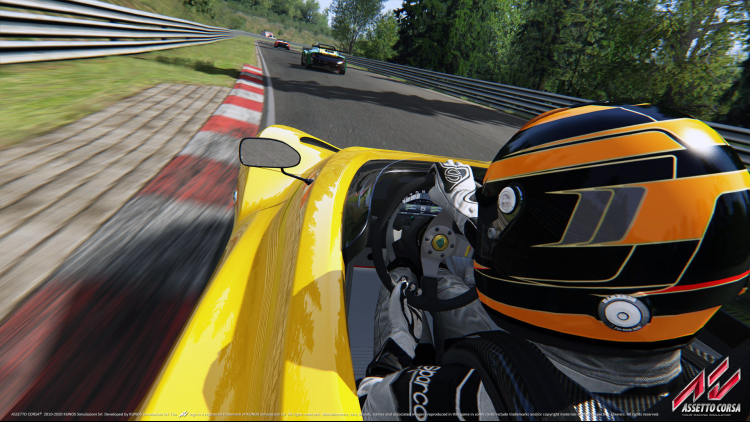

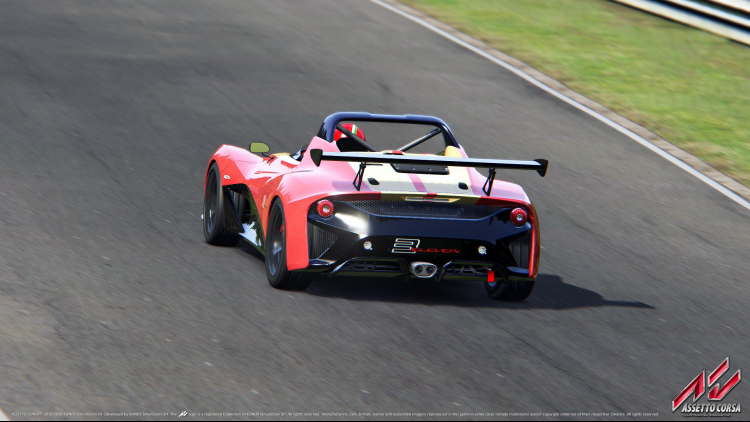
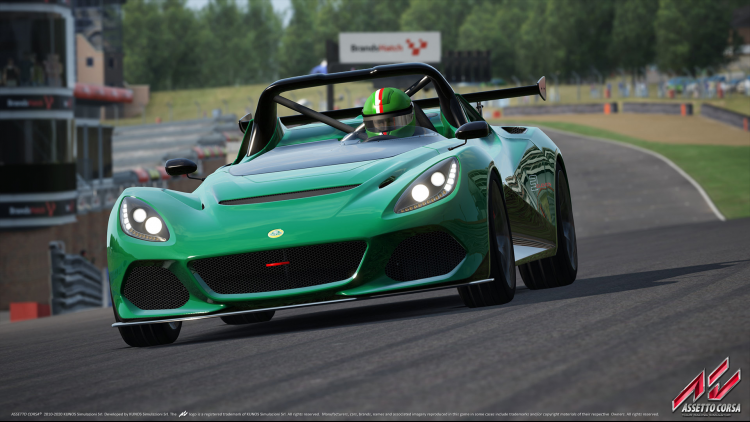
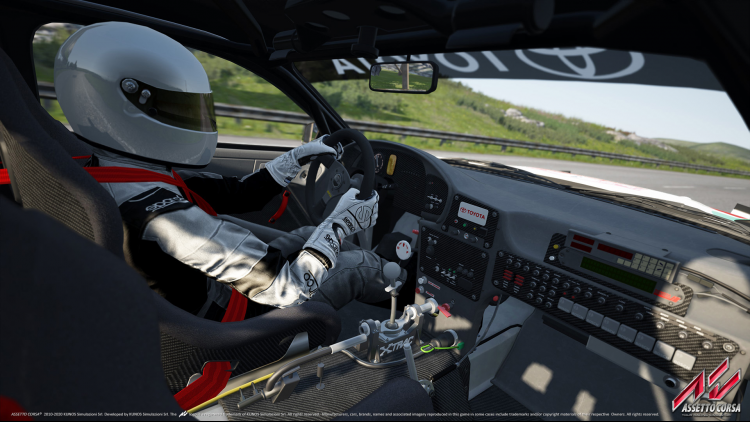
Assetto Corsa - Ready To Race Pack
Introducing "Ready To Race", our all-new DLC for Assetto Corsa, available for PC Steam on May 18. "Ready To Race" includes 10 new cars from AUDI, Lotus, McLaren, Maserati and Toyota, providing the "most wanted" models ready to race!
Our all new RTR DLC provides a great variety of models that mix technology, power, history and design from Italy, Germany, Great Britain and Japan, resulting in a package designed to meet all your wishes!
CARS INCLUDED
* Audi R8 LMS 2016
* Audi R18 e-tron quattro
* Audi TT Cup 2016
* Audi TT RS (VLN)
* Lotus 3-Eleven
* Maserati MC12 GT1
* McLaren 570S
* McLaren P1 GTR
* Toyota Celica ST185 Turbo
* Toyota TS040 Hybrid
Audi R8 LMS 2016
The new Audi R8 LMS, now featuring even more race car technology, is following in the footsteps of its successful predecessor.
Audi fans were already able to marvel at the new GT3 sports car from Neckarsulm in full action in 2015, for instance in the 24-hour race at the Nurburgring, where the Audi Sport Team WRT celebrated overall victory with the new R8 LMS. At the 12-hour race at Sepang the Audi R8 LMS took a one-two-three win. The 2016 season also began successfully: An overall victory in the Dubai 24 Hours and a class win in the classic Daytona 24 Hours.
******
Audi R18 e-tron quattro
The concept behind the Audi R18 e-tron quattro is unprecedented in LMP sport, and its realization a pioneering achievement. In the first development step, the engineers from Audi Sport and their partners investigated a wide variety of solutions. These included a parallel hybrid, where both drive systems propel the rear wheels. After weighing up considerations such as traction, handling characteristics, packaging and weight distribution, they ultimately decided to separate the drive systems by axle – the combustion engine drives the rear wheels permanently, and the electric drive propels the front wheels on demand.
On the R18 e-tron quattro, part of the braking energy benefits the motor generator unit (MGU) that is located at the front axle. Their two permanently excited synchronous machines convert the recovered energy into direct current through power electronics. This current drives a flywheel energy storage system positioned on the left inside the cockpit.
When the speed exceeds 120 km/h, the energy is called up from the storage system again. Converted back into alternating current by the power electronics, it then supplies the MGU’s two electric motors. These jointly feed more than 160 kW to the front wheels via single-stage planetary gears; the central control unit keeps the revs and torque in line with the conditions prevailing at the rear wheels. The racing car temporarily becomes a quattro with four driven wheels.
******
Audi TT Cup 2016
For the Audi Sport TT Cup, the German manufacturer has developed a visually as well as technologically attractive sports car for racing, the Audi TT cup.
The body shell of the Audi TT racing version consists of aluminum and carbon fiber. This ensures that the Audi TT cup that tips the scales at 1,125 kilograms is a lightweight and extremely agile car.
The Audi TT cup car uses the 2.0 TFSI from the Audi TTS. The four-cylinder engine delivers 228kW (310hp) in the production model and accelerates the TTS from 0 to 100km/h in 4.7 seconds. By means of a so-called Push-to-pass function, the drivers can briefly boost the engine's output by 22kW (30hp) for overtaking maneuvers by pushing a button on the steering wheel. A blue lamp in the windshield indicates the boost activation. LEDs in the rear side windows show how many times the driver can still use the additional power. The number of available boosts is defined by the regulations.
Power is transmitted to the front wheels via a direct-shift dual-clutch transmission. The six-speed S tronic, which has been specifically tuned for use in racing, is operated by shift paddles on the steering wheel. Accordingly, the Audi TT cup only has two pedals, used for acceleration and braking.
******
Audi TT RS (VLN)
Audi TT RS (VLN) has been developed in order to respond to the high demand by customers wishing to use the TT and other vehicles of the brand in motorsport.
It's based on a five-cylinder TFSI engine and features racing-specific new developments in the areas of the body, suspension and aerodynamics.
******
Lotus 3-Eleven
Designed as an uncompromised manifestation of the Lotus spirit, their new car is focused on providing an undiluted driving experience, and underlines the company’s ability to deliver legendary handling and blistering speed.
Working on the concept of less is more, and keeping close to Lotus’ track roots, the dramatic new vehicle features an all-new lightweight body, with an open cockpit design and a revised V6 supercharged engine developing 450hp.
Two variations of the Lotus 3-Eleven are available: Road and Race; both delivering an impressive combination of high performance, agility and precision. Based on the Road version, the Race includes a much more aggressive aero kit, a sequential gearbox and an FIA approved driver’s seat with a six-point harness.
Assetto Corsa simulates the Race version. With a dry weight of below 900kg (Race version), the 3-Eleven offers an enviable power to weight ratio, in excess of 500hp per tonne, and is capable of sprinting from 0-60 mph in less than 3.0 seconds before reaching a maximum speed of 290 km/h for the Race version.
******
Maserati MC12 GT1
The Maserati MC12 entered production in 2004 as base for the racing variant to compete in the GT Championship. In fact, one requirement for participation in the GT Championship was the production of at least 25 road cars; so 25 cars were produced in 2004 and another 25 in 2005.
The car was based on the Enzo Ferrari chassis and gearbox, mounting a variant of the Ferrari Dino V12 engine.
The racing results of the racing version were magnificent. The Maserati MC12 GT1 team managed to end second and third in the debut race, winning the next round's race. The second year Maserati won the Manufacturers' Cup with a great point gap, and continued to compete at great level during the next years. It participated in 94 races, winning 40 of them.
******
McLaren 570S
Like every McLaren, the performance of the 570S Coupé is breathtaking. It combines, as its name suggests, a power output of 562bhp with lightweight construction to give a class leading power-to-weight ratio of 434PS per ton. The 570S accelerates from 0 to 100km/h in 3.2 seconds, while 200km/h is reached in just 9.5 seconds with the pace not letting up till the car reaches a top speed of 328km/h.
The McLaren design team has created a shape of beauty highlighted by details such as the rear flying buttresses that increase downforce as well as adding grace, and complex door tendons that direct additional air to cool the mid-mounted V8 engine.
The Sports Series features an evolution of the 3.8-litre V8 twin turbo engine, named M838TE, with 30 percent of components bespoke to the new model. Engineered by McLaren, it produces 562bhp at 7,400 rpm, and 600Nm of torque at 5,000-6,500 rpm. Power is delivered through a seven-speed SSG transmission, and transferred to the road through the rear wheels. This power is brought under control with standard-fit carbon ceramic brakes.
The unique carbon fiber MonoCell II chassis has been newly designed with more of a focus on day-to-day usability, offering improved ingress and egress from the cabin. It is incredibly strong and stiff yet weighs less than 80kg, offering optimum levels of protection. This lightweight structure, and the use of aluminum body panels, contributes to a dry weight of as low as 1,313kg, almost 150kg lighter than its closest competitor.
******
McLaren P1 GTR
Based on the McLaren P1™ road car, the track-focused McLaren P1™ GTR design concept further optimizes the aerodynamically efficient \"shrink-wrapped\" body shape in order to offer maximum performance, superior handling characteristics and optimized driver engagement on track. A host of changes have been made, and the car has been thoroughly re-engineered from the ground up to ensure the McLaren P1™ GTR achieves its target of being the ultimate drivers' car on track.
The front track of the McLaren P1™ GTR design concept has been widened by 80mm over the McLaren P1™, and is coupled with a more aggressive GT-style front splitter. Reprofiled low-temperature radiator ducts seamlessly flow into the leading edge of the aggressively flared front wheel arches, while the bodywork is \"shrink-wrapped\" around the carbon fiber MonoCage chassis behind the front wheels, cleaning the flow of air along the car's flanks.
The profile of the McLaren P1™ GTR design concept remains as dramatic as ever, hunkered down on to the race-prepared suspension with a fixed ride height, lower than the standard car. The snorkel air intake, inspired by the design of the original McLaren F1, is still present within the roof structure of the carbon fiber MonoCage chassis.
At the rear, a large, twin-element wing is mounted on dramatic carbon fiber pylons which extend around the rear of the bodywork. This fixed-height wing is fitted with a hydraulically operated Drag Reduction System (DRS) to boost acceleration performance, and has been honed to provide increased levels of downforce compared to the road car, working with the active aerodynamic flaps located ahead of the front wheels.
The road legal McLaren P1™ stows the rear wing within the bodywork, but with the fixed height wing, and therefore no pistons or moving mechanical parts, the bodywork of the McLaren P1™ GTR design concept behind the engine bay is now a smooth, flowing surface, feeding clean air below the wing and over the back of the car.
Below the rear wing sits the exposed, centrally mounted exhaust, which is an all new design, developed exclusively for the McLaren P1™ GTR. Made from inconel and titanium alloy, the system maximises the aural characteristic of the higher output 3.8-litre twin turbo V8 engine to maintain, and further emphasise, the McLaren sound. The design of the exhaust has also changed, with a straight cut twin-pipe setup now used in place of the single-exit exhaust.
******
Toyota Celica ST185 Turbo
The Toyota Celica ST185 is Toyota's most successful rally car, as it won the WRC Driver's Championship in 1992, and the WRC Manufacturer's and Driver's Championships in 1993 and 1994.
In order to meet the Group A competition's homologation requirements, 5,000 GT-Four RC production versions of the Celica were manufactured, starting from September 1989.
This car made its debut on the Monte Carlo Rally, the opening round of the 1992 World Rally Championship series, but it was not successful until half of the season.
******
Toyota TS040 Hybrid
Thanks to the 480hp exerted by electric motors on the four-wheel drive, in addition to the 520hp produced by its 3.7-liter petrol engine, the TS040 HYBRID expresses a maximum power of 1.000hp and represents the ultimate expression of Hybrid technology applied to the world racing.
The transition to a hybrid four-wheel drive Toyota sees the return to a philosophy that since 2007 has been part of the development of hybrid technology applied to racing, when the Supra HV-R-wheel drive was the first hybrid to win a competition endurance, the 24 Hours of Tokachi.
The new unit TOYOTA HYBRID Racing has been specifically developed according to the new technical regulations specified by the WEC, particularly frugal. It requires a 25% reduction in fuel consumption compared to 2013, with savings achieved through interventions on the engine, aerodynamic efficiency and driving dynamics.
Buy Assetto Corsa - Ready To Race Pack PC Steam Game Code - Best Price | eTail
Buy Assetto Corsa - Ready To Race Pack PC game code quickly and safely at the best prices guaranteed via the official retailer usa.etail.market
END-USER LICENSE AGREEMENT (EULA)THE USE OF THIS SOFTWARE IS NOT ALLOWED IN ANY WAY IN PUBLIC, AND/OR FOR PROMOTIONAL, ENTERTAINMENT, TRAINING, EDUCATIONAL OR COMMERCIAL PURPOSES, FOR FREE OR NOT, WITHOUT AN EXPLICITE, WRITTE PERMISSION PROVIDED BY KUNOS SIMULAZIONI SRL. This is a legal agreement between you (
OS: Windows Vista Sp2 - 7 Sp1 - 8 - 8.1 - 10
Processor: AMD Athlon X2 2.8 GHZ, Intel Core 2 Duo 2.4 GHZ
Memory: 2 GB RAM
Graphics: DirectX 10.1 (e.g. AMD Radeon HD 6450, Nvidia GeForce GT 460)
DirectX: Version 11
Storage: 15 GB available space
Sound Card: Integrated
Assetto Corsa - Ready To Race Pack Recommended System Requirements :
OS: Windows Vista Sp2 - 7 Sp1 - 8 - 8.1 - 10
Processor: AMD Six-Core CPU, Intel Quad-Core CPU
Memory: 6 GB RAM
Graphics: DirectX 11 (AMD Radeon 290x, Nvidia GeForce GTX 970)
DirectX: Version 11
Storage: 30 GB available space
Sound Card: Integrated
1)
Download & install the Steam client on your
computer from here.
2)
Open the Steam client, register and login. Then,
locate the Games tab on the top menu. Click that and select “Activate a Product
on Steam..”

3)
Enter your code that is showed on the orders page
of eTail. Market and and follow the steps showed to activate your game.

4)
The game can be monitored now and you can see it
on the "Library" section on Steam. You can download and install the
game now.
5)
If you need more information and support, you
can click here: https://help.steampowered.com/en/wizard/HelpWithSteam













